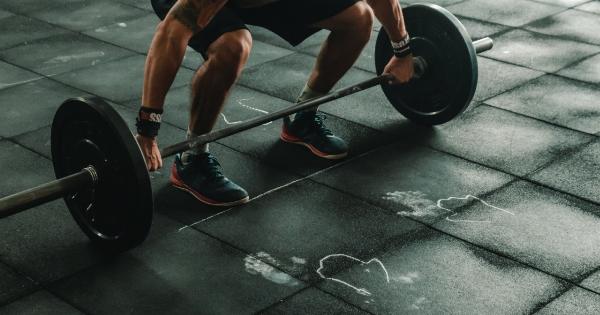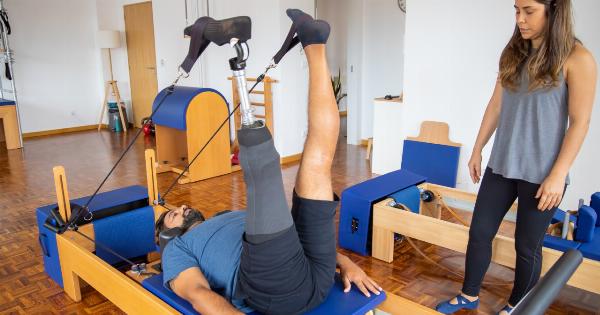HIIT, which stands for High-Intensity Interval Training, has been gaining popularity in the fitness world as an effective and time-efficient workout method.
With its unique combination of intense bursts of exercise followed by short recovery periods, HIIT training has been proven to provide quick results in terms of fat loss, muscle toning, and cardiovascular fitness. In this article, we will delve into the world of HIIT training and explore how it can help you achieve your fitness goals in a quick and efficient manner.
What is HIIT Training?
HIIT training is a form of cardiovascular exercise that involves alternating between short periods of intense exercise and short recovery periods.
The high-intensity exercises performed during the workout elevate your heart rate, while the recovery periods allow it to come down slightly before the next round begins. This cycle is repeated for a specific duration, usually lasting anywhere from 10 to 30 minutes.
Benefits of HIIT Training
1. Time Efficiency: One of the biggest advantages of HIIT training is its time efficiency. With traditional steady-state cardio exercises, you may need to spend hours at the gym to achieve similar results to a shorter HIIT session.
2. Increased Fat Burning: HIIT workouts are known for their ability to burn more calories in less time. The intense nature of these exercises boosts your metabolism, allowing you to continue burning calories even after you’ve finished your workout.
3. Preserves Muscle Mass: Unlike long-duration cardio sessions, HIIT training helps preserve muscle mass alongside burning fat. This is because the focus is on intensity rather than duration.
4. Improved Cardiovascular Health: HIIT workouts challenge your cardiovascular system and improve your heart health. The intense bursts of exercise followed by short recovery periods push your heart to adapt and become more efficient.
5. No Equipment Required: HIIT workouts can be done with little to no equipment. Bodyweight exercises like burpees, push-ups, and squats can be combined to create a challenging HIIT routine.
6. Versatility: HIIT training can be customized to suit various fitness levels and preferences.
Whether you prefer to work out outdoors, in the gym, or even in the comfort of your own home, the flexibility of HIIT workouts makes it accessible to everyone.
How to Get Started with HIIT Training
Before diving right into HIIT training, it’s important to ensure you are physically able to handle the intensity.
If you have any pre-existing medical conditions or concerns, it is advisable to consult with a healthcare professional before starting any new exercise program.
Once you’ve received the green light, here are some steps to get started:.
1. Set Your Goals
Define your fitness goals, whether it’s weight loss, improved cardiovascular fitness, or toning specific muscle groups. Having a clear idea of what you want to achieve will help you tailor your HIIT workouts accordingly and stay motivated.
2. Choose Your Exercises
Select exercises that target different muscle groups and elevate your heart rate. This could include exercises like jumping jacks, mountain climbers, high knees, or burpees.
Aim to have a mix of cardio and strength-based exercises to achieve a well-rounded workout.
3. Determine Work and Rest Times
Decide on the duration of your work and rest periods. Typically, the work interval should be around 20-60 seconds, followed by a rest interval of 10-30 seconds.
The length and intensity of the intervals can be adjusted as per your fitness level and preferences.
4. Warm Up and Cool Down
Prior to starting your HIIT workout, ensure you warm up properly. This helps increase blood flow, loosens up muscles, and reduces the risk of injury.
Similarly, cooling down at the end of your session with some light stretching exercises can aid in muscle recovery and reduce post-workout soreness.
5. Start Slow and Progress Gradually
If you’re new to HIIT training, it’s important to start at an appropriate intensity level and gradually increase it as your fitness improves. Pushing yourself too hard initially may lead to burnout or injuries.
Listen to your body and give yourself enough time to adapt to the demands of HIIT workouts.
Sample HIIT Workout
Here’s an example of a beginner-friendly HIIT workout:.
1. Jumping Jacks (30 seconds)
Start with your feet together and hands resting by your sides. Jump up, spreading your legs wider than hip-width apart and raising your hands above your head. Jump back to the starting position and repeat.
2. Bodyweight Squats (30 seconds)
Stand with your feet shoulder-width apart. Lower your body as if you’re sitting back into an imaginary chair, keeping your chest up and your knees behind your toes. Push through your heels to return to the starting position.
3. High Knees (30 seconds)
Stand in place and jog on the spot while lifting your knees as high as possible. Engage your core and pump your arms as if you’re running.
4. Push-ups (30 seconds)
Start in a high plank position with your hands slightly wider than shoulder-width apart. Lower your body until your chest almost touches the floor, then push back up to the starting position.
5. Burpees (30 seconds)
Start in a standing position. Lower your body into a squat position with your hands on the floor in front of you.
Kick your feet back into a high plank position, perform a push-up, then jump your feet back into the squat position before jumping up explosively with your hands raised above your head.
Repeat the circuit 3-4 times with 20 seconds of rest between each exercise.
Conclusion
HIIT training offers a quick and efficient way to achieve your fitness goals.
By incorporating intense bursts of exercise followed by short recovery periods, HIIT workouts maximize calorie burn, improve cardiovascular health, and help you build lean muscle mass. The versatility and time efficiency of HIIT training make it accessible to individuals of all fitness levels. So, if you’re looking to get the most out of your workout sessions while saving time, give HIIT training a try.


























